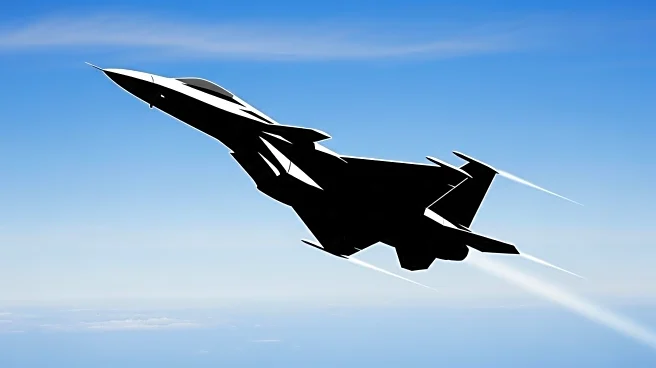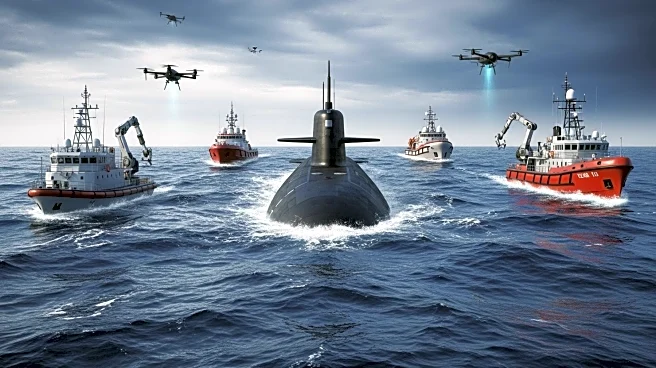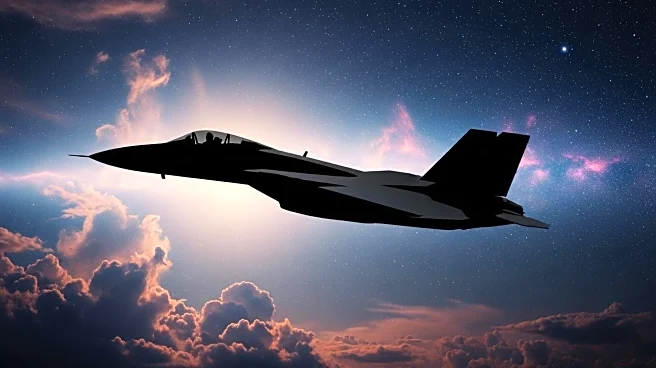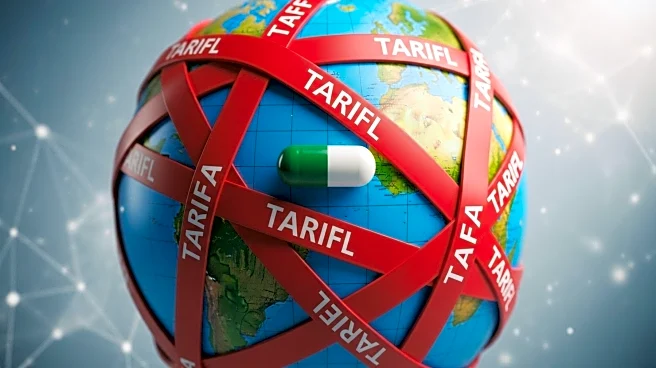What's Happening?
The defense technology sector has experienced a significant surge in investment, with approximately $28 billion directed towards autonomous systems and communications technologies in 2025. This marks a substantial increase in venture capital funding, emphasizing dual-use innovations that integrate commercial scalability with military-grade capabilities. The U.S. Navy's recent contracts for collaborative combat aircraft highlight a shift towards coordinated autonomous networks across various domains, including air, land, and sea. Companies like VisionWave Holdings Inc., Ondas Holdings Inc., and Red Cat Holdings, Inc. are at the forefront, leveraging advancements in robotics and satellite communications to enhance military operations. The Pentagon's deployment of satellite networks aims to bolster missile defense and secure communications, further supporting autonomous military systems.
Why It's Important?
This investment wave is pivotal for the U.S. defense industry, as it underscores a growing reliance on autonomous technologies to maintain military superiority. The integration of AI and autonomous systems across multiple domains enhances operational efficiency and reduces human risk in combat scenarios. Companies involved in these developments stand to gain significantly, as they are positioned to meet the increasing demand for advanced defense solutions. The expansion of satellite communications and autonomous systems also strengthens national security by providing resilient and secure communication channels, crucial in electronic warfare scenarios. This trend reflects a broader strategic shift towards leveraging cutting-edge technology to address modern military challenges.
What's Next?
As the defense sector continues to evolve, further investments and collaborations are expected to drive innovation in autonomous systems. Companies like VisionWave are likely to expand their strategic partnerships and explore international opportunities, such as roles in defense modernization programs in countries like India. The ongoing development of AI-driven platforms and the expansion of satellite networks will likely lead to new contracts and projects, enhancing the capabilities of the U.S. military and its allies. Stakeholders, including defense contractors and government agencies, will need to adapt to these technological advancements to maintain a competitive edge.
Beyond the Headlines
The rise of autonomous defense networks raises important ethical and legal considerations, particularly regarding the deployment of AI in military operations. The potential for autonomous systems to operate independently in combat scenarios necessitates robust oversight and regulatory frameworks to ensure compliance with international laws and ethical standards. Additionally, the integration of commercial technologies into military applications highlights the need for secure and resilient supply chains to protect sensitive information and maintain operational integrity.










